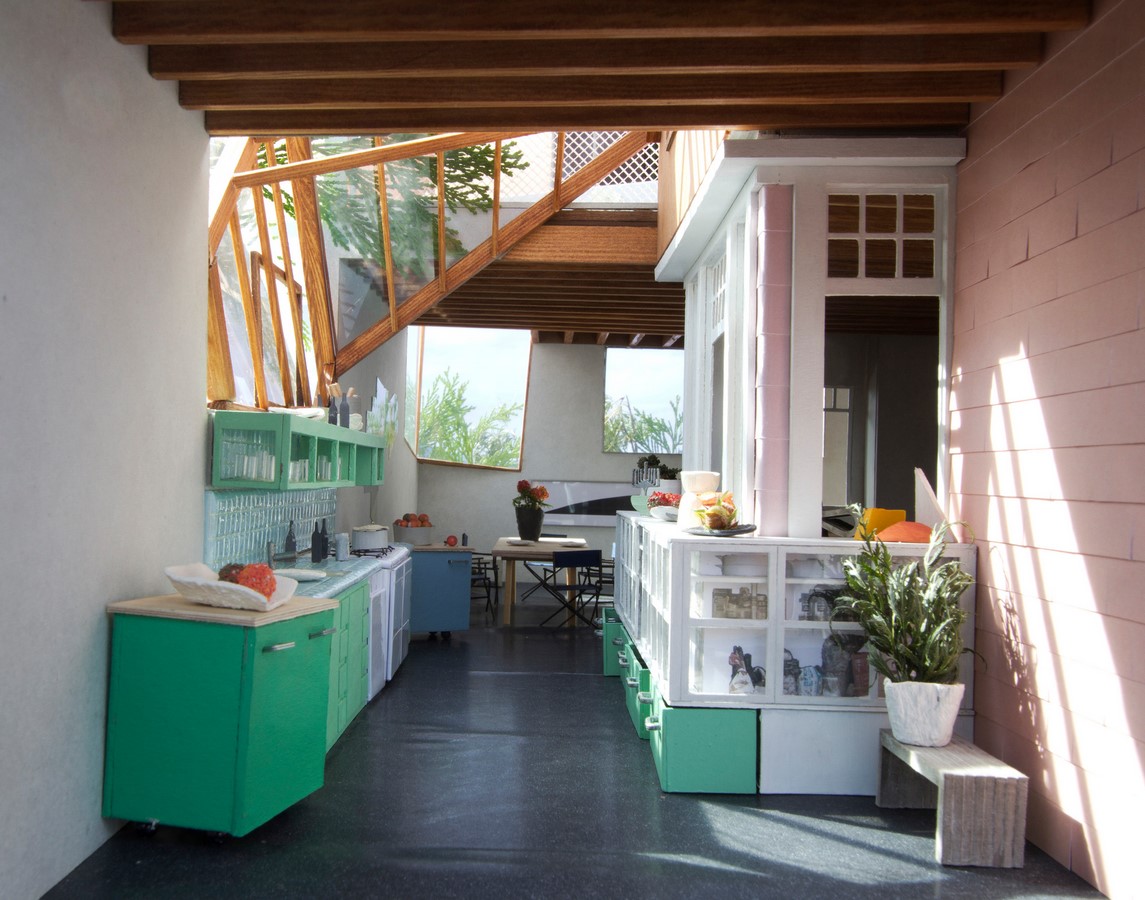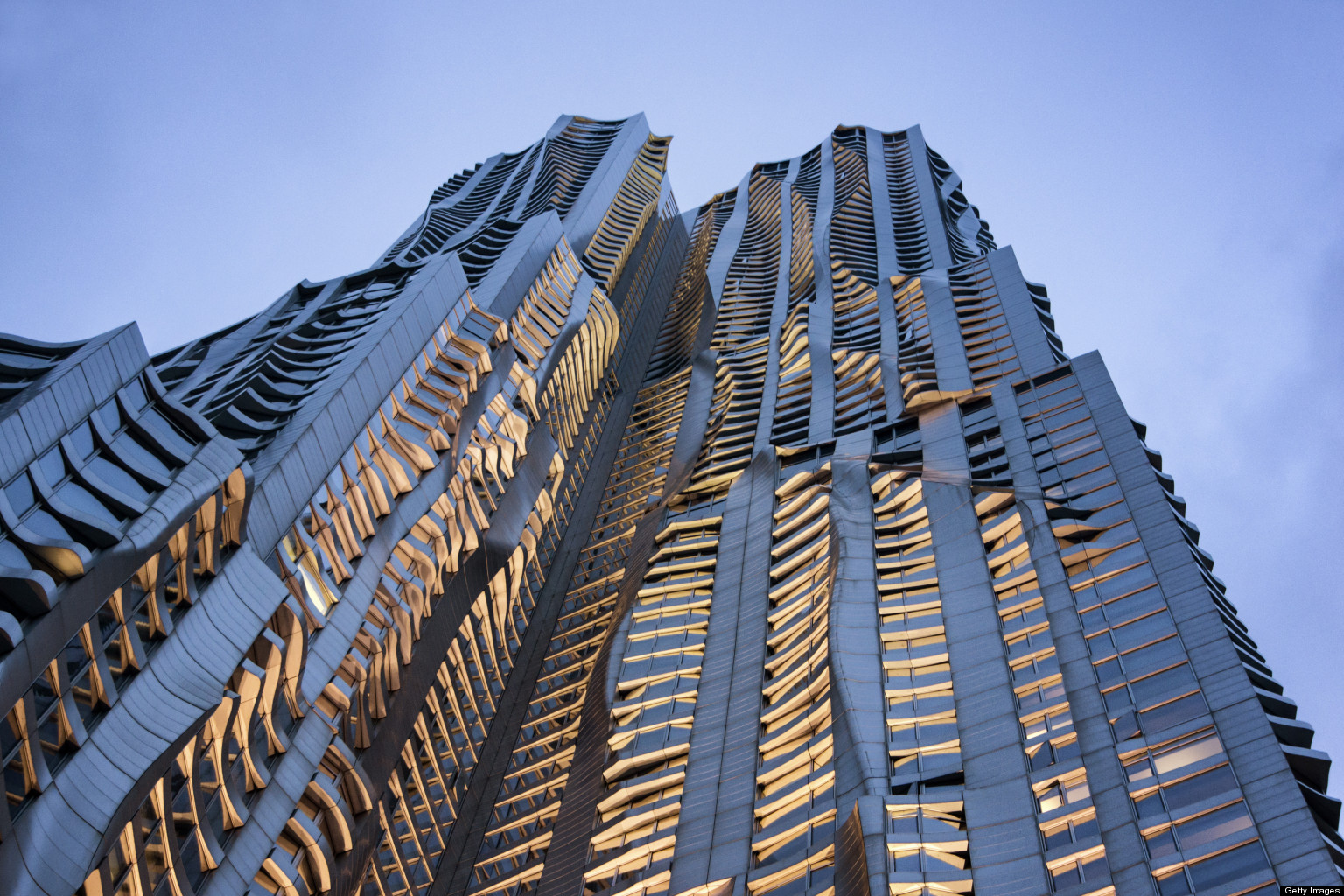Table Of Content

A bucket inclined, for example, consists of the wooden structure of the original house, breaks through the structure, removing the layers of the house. As these forms make their way out, take off the skin of the building, exposing the structure, create a second skin that wraps around the front and the site of the new volume, but disappears right posterior wall of the house to release her as a stage. After passing through the structure, forms escape this second skin, but ultimately prevents them from escaping. Therefore, the first stage operates in the space between the original and its skin wall displaced. This gap is an area of conflict in the stable differences between interior and exterior, original and added, structure and facade are questioned.
Europe's best new building
Gehry marvels at the intricacy of what he describes as “the beams’ connections to connections.” Every room enjoys magnificent views across the garden to the Santa Monica Canyon, but the two men wanted the views to vary. Thus the dining room is slightly elevated, with vistas that stretch to the ocean, while the living room sinks gently into the site for a more intimate outlook, toward Pacific Palisades. Accessed by an elevator and stairs, the second level contains a master suite. Gehry envisioned the interior balconies on this level, which overlook the ground floor and the ocean, as sites where musicians could play to the rooms below. To give coziness and livability to the idiosyncratic interior spaces, several of which are defined by partial walls, the Dempseys called on Estee Stanley, a decorator and fashion stylist who had designed their previous residence.

Olympic Village street lamps
In 1998, "The Art of the Motorcycle" exhibition opened at the Solomon R. Guggenheim Museum with its installation designed by Gehry. This exhibition subsequently traveled to the Field Museum of Natural History in Chicago, the Guggenheim Museum in Bilbao and the Guggenheim Las Vegas. Gehry continued to design other notable buildings in California, such as the Chiat/Day Building (1991) in Venice, in collaboration with Claes Oldenburg, which is well known for its massive sculpture of binoculars. He also began receiving larger national and international commissions, including his first European commission, the Vitra International Furniture Manufacturing Facility and Design Museum in Germany, completed in 1989. It was soon followed by other major commissions including the Frederick Weisman Museum of Art[25] (1993) in Minneapolis, Minnesota; the Cinémathèque Française[26] (1994) in Paris; and the Dancing House[27] (1996) in Prague. The New Yorker called the Richard B. Fisher Center "[possibly] the best small concert hall in the United States." The building's heat and air-conditioning systems are entirely powered by geothermal sources, enabling the Center to be fossil fuel free during standard operations.
Weisman Art Museum (Minneapolis, Minnesota)

"Estee’s work has a feminine vibe that brings a second energy to the tougher, more muscular forms of the architecture," Patrick observes. Frank Owen Gehry CC FAIA (/ˈɡɛəri/; né Goldberg; born February 28, 1929) is a Canadian-born American architect and designer. A number of his buildings, including his private residence in Santa Monica, California, have become world-renowned attractions. New York by Gehry is an 899-unit residential apartment building that also includes a pre-K to grade 8 public school, an ambulatory care center, retail space, and parking on the lower levels. The 1,040,904-square-foot, 76-story building is 870 feet tall and was at the time of its completion the tallest residential building in North America.
Gehry's Dining Room—Creating the Mystery of Intention
In 1978, the Gehry House in Santa Monica, California, became his laboratory for experimentation with aesthetics. The kitchen floor is covered with asphalt, suggesting a path to the outside of the original bungalow. In the third stage, the courtyards are filled with shapes that seem to escape the house through the gap in the back wall, which is then closed. These forms are placed under tension by being twisted relationship with each other and with the house.
Chiat/Day Complex (Venice, California)
The total cost of the project reached $62 million and took three years to complete, opening in April 2003. Hallmarks of Gehry's AGO design connect the city and the Gallery in provocative new ways including dramatic sculptural staircases, the warmth of Douglas fir, and the extensive use of glass which infuses the galleries with natural light. Gehry Tower is a nine-story building that was commissioned by the city-owned Hanover Transport Services (üstra), for whom Gehry also designed a bus stop in the city. Originally built in 1920 and purchased by Gehry in 1977, the Gehry House features a metallic exterior wrapped around the original building that leaves many of the original details visible. In 2012, it won the American Institute of Architects’ prestigious Twenty-Five Year Award.
However, the house became more open and comfortable for Gehry and his family, and the increased finish, more delicate materials, and greater coherence reflected. Skylights and glass floors allowed light from above to filter down into the house’s lower level, filling it with light. It’s rare for an architect to become a household name, but the ones who earn this distinction have their designs lauded for decades to come.
The Santa Monica home is not a new house built by the architect, but a modification of an existing building, changing the shape, extending, adding new materials and completely changing the appearance. Gehry actually kept the old Dutch colonial house, but not in a conventional manner, the new residence was built around the old. Holes were made, walls were thrown and were rebuilt and the quiet old house became a loud cry contemporary among the mansions of the astonished neighbors. The neighbors hated him, but that does not change the fact that the house would become a piece of art intertwined with the architecture.
Tour an Early Frank Gehry Gem - Frank Gehry Spiller House - ELLE Decor
Tour an Early Frank Gehry Gem - Frank Gehry Spiller House.
Posted: Wed, 15 Feb 2023 08:00:00 GMT [source]
Some of his most famous works include the Guggenheim Museum Bilbao in Spain, the Walt Disney Concert Hall in Los Angeles, and the Louis Vuitton Foundation in Paris. Gehry is widely regarded as one of the most influential architects of our time, and his work continues to inspire new generations of architects and designers. Gehry's interior design—a glass-enclosed rear addition with a new kitchen and a new dining room—was as unexpected as the exterior façade. Within a framework of skylights and glass walls, traditional interior utilities (kitchen cabinets, dining table) seemed out of place within a shell of modern art.
Then he came across an old house on a prime lot on one of Santa Monica’s finest streets, overlooking Santa Monica Canyon, with a view of the ocean. He could tear it down without guilt, giving him a broad canvas to work with. Though controversial, the house attracted important clients, which gave Gehry the freedom to work on grander projects than the modest homes he had designed up to that point. The second renovation of his Santa Monica home, in 1991–92, was undertaken to accommodate the changing needs of the Gehry family and included the addition of a lap pool, the conversion of the garage into a guesthouse, and increased landscaping for privacy. Some of the exposed wood frames were removed or covered over, and many lamented a loss of edge.
He bought several electric guitars and cut them into pieces, serving as the building blocks of his design. Opened in 1993, the Weisman Art Museum was expanded in 2011, with an addition also designed by Gehry that creates a seamless and fluid visitor experience. Frank Gehry experimented with unexpected designs and played with the rawness of materials to create his own beauty and harmony.
In 2012, the iconoclastic Gehry Residence received the American Institute of Architects’ (AIA) 25 Year Award for design excellence. Gehry’s remodeling of a standard suburban house type using unusual materials and forms is thought, by some critics, to be an early example of Deconstructivism in architectural design. Deconstructivism as a design methodology is predicated upon the disassembly and negation of traditional, historical building models and especially the rejection of the functionality and minimalism characteristic of twentieth-century modernism.

No comments:
Post a Comment